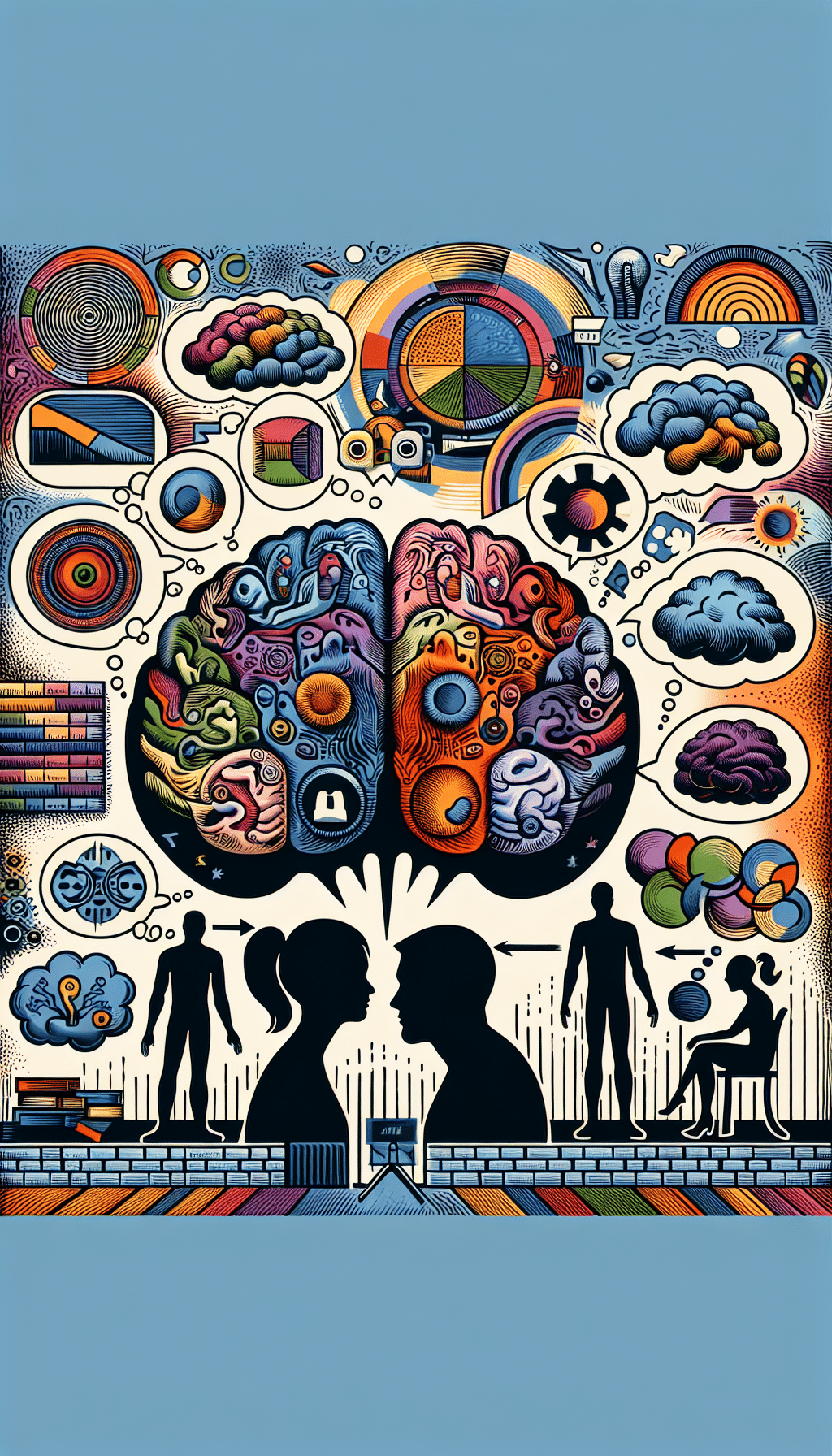
Overview of Psychodynamic Communication Skills
Psychodynamic communication skills refer to the understanding and application of psychological principles in interpersonal interactions. Effective communication is essential in all aspects of life, from personal relationships to professional settings. Psychodynamic communication focuses on the impact of unconscious thoughts, feelings, and motivations on our ability to connect with others.
Key components of psychodynamic communication include active listening, self-awareness, empathy, and the ability to navigate complex emotional dynamics. By delving into the underlying psychological factors that influence our communication patterns, we can improve our ability to relate to others, resolve conflicts, and build stronger connections.
Understanding Unconscious Factors in Communication
Psychodynamic communication skills emphasize the importance of understanding unconscious factors that influence our interactions with others. The role of subconscious thoughts and feelings in communication dynamics cannot be underestimated, as they often shape our behavior and responses in ways that we may not consciously recognize.
Unconscious factors can manifest in various ways during communication, such as through subtle body language, tone of voice, or choice of words. These hidden cues convey emotions, fears, and desires that may not be expressed verbally but still impact the overall message being conveyed. For example, someone may appear confident and assertive on the surface, but deep down, they may be harboring feelings of insecurity or vulnerability that leak out through nonverbal cues.
Furthermore, unconscious biases and assumptions can color our perceptions of others, leading to misunderstandings or misinterpretations in communication. These implicit biases are shaped by our past experiences, upbringing, and cultural influences, and can influence how we perceive and react to others, often without our conscious awareness.
By recognizing and acknowledging the presence of unconscious factors in communication, individuals can gain deeper insights into their own behaviors and reactions, as well as those of others. This self-awareness can help uncover hidden motives, fears, and desires that may be influencing our interactions, allowing for greater clarity and authenticity in communication.
Developing an awareness of unconscious factors also enables individuals to cultivate empathy and understanding towards others, as we recognize that everyone brings their own unique experiences and perspectives to the table. By tuning into these subtle cues and unspoken messages, we can foster deeper connections and more meaningful interactions with those around us.
Developing Self-awareness for Effective Communication
Self-awareness is a fundamental aspect of psychodynamic communication skills. By understanding our own triggers, defense mechanisms, and subconscious patterns, we can navigate communication dynamics more effectively. When we are aware of our own emotions and reactions, we can better manage them in conversations with others, leading to more genuine and impactful interactions.
Recognizing personal triggers is an essential first step in developing self-awareness. These triggers are often rooted in past experiences or core beliefs that shape our communication style. By identifying these triggers, we can prevent them from negatively influencing our interactions with others. For example, if someone tends to become defensive when receiving feedback, acknowledging this trigger can help them approach feedback with an open mind rather than defensiveness.
Defense mechanisms, such as projection or displacement, can also impact communication. Being aware of these defense mechanisms in ourselves allows us to pause and choose more constructive ways to respond. This self-awareness can lead to more authentic and honest communication, fostering deeper connections with others.
Empathetic listening is another crucial component of self-aware communication. By actively listening and trying to understand the perspective of the speaker, we can build trust and rapport in conversations. Empathetic listening involves putting aside our own judgments and biases to truly engage with the other person’s words and emotions.
Overall, developing self-awareness for effective communication involves constant reflection and introspection. It requires a willingness to confront and work through our own insecurities, biases, and patterns of behavior. By cultivating self-awareness, we can enhance our communication skills and form more meaningful connections with those around us.

Exploring Transference and Countertransference in Communication
Transference and countertransference are essential concepts in psychodynamic communication, originating from Freudian psychoanalytic theory. Transference refers to the unconscious redirection of feelings from past relationships onto present interactions, while countertransference involves the therapist or communicator experiencing their own emotional reactions towards the individual they are interacting with.
Definition and examples
For instance, a person may unconsciously project feelings of distrust onto a new colleague due to past experiences with authority figures. This transference can impact the dynamics of their communication, leading to misunderstandings or conflicts. On the other hand, countertransference may manifest as a therapist feeling overly protective or empathetic towards a client based on their own unresolved issues.
Strategies for managing transference and countertransference
To navigate transference and countertransference in communication effectively, individuals should first cultivate self-awareness regarding their own triggers and biases. By recognizing when these unconscious processes are at play, communicators can pause and reflect on the source of their emotions before responding. Additionally, establishing boundaries and maintaining a professional demeanor can help mitigate the influence of transference and countertransference on communication.
Furthermore, seeking supervision or consultation from a trained professional can provide valuable insights and guidance on addressing transference and countertransference in a therapeutic or communicative setting. By openly discussing and exploring these dynamics, individuals can deepen their understanding of the underlying emotions driving their interactions and develop more authentic and impactful communication skills.
Applying Psychodynamic Approaches in Communication
Psychodynamic approaches in communication involve integrating Freudian concepts and principles into everyday interactions to improve the quality of communication and relationships. By understanding the underlying motivations, fears, and desires that shape our communication patterns, individuals can become more attuned to their own emotions and those of others. This increased self-awareness can lead to more authentic and meaningful connections with others.
Integrating Freudian Concepts
One key aspect of applying psychodynamic approaches in communication is incorporating Freudian concepts such as the id, ego, and superego into our understanding of interpersonal dynamics. The id represents our primal instincts and desires, the ego acts as a mediator between the id and superego, and the superego reflects our internalized societal norms and values. By recognizing these inner conflicts within ourselves and others, we can better navigate complex communication situations.
Case Studies Illustrating Successful Techniques
Case studies provide practical examples of how psychodynamic communication techniques can be effectively applied in various contexts. For instance, a therapist may use transference and countertransference dynamics to help a client understand and work through unresolved issues from their past. By acknowledging and addressing these unconscious processes, individuals can cultivate healthier communication patterns and resolve interpersonal conflicts.
Overall, applying psychodynamic approaches in communication requires a willingness to delve into the deeper layers of our psyche and emotions. By embracing the complexities of human behavior and relationships, individuals can enhance their communication skills and establish more genuine connections with others.

Summary
Understanding the psychodynamic aspects of communication skills is crucial for effective interpersonal interactions. By delving into unconscious factors, individuals can navigate communication dynamics more adeptly and cultivate self-awareness for improved connection with others. Awareness of transference and countertransference can further enhance communication by addressing underlying emotions and facilitating clearer exchanges. By applying psychodynamic approaches in communication, individuals can create more meaningful and authentic connections in both personal and professional relationships.






